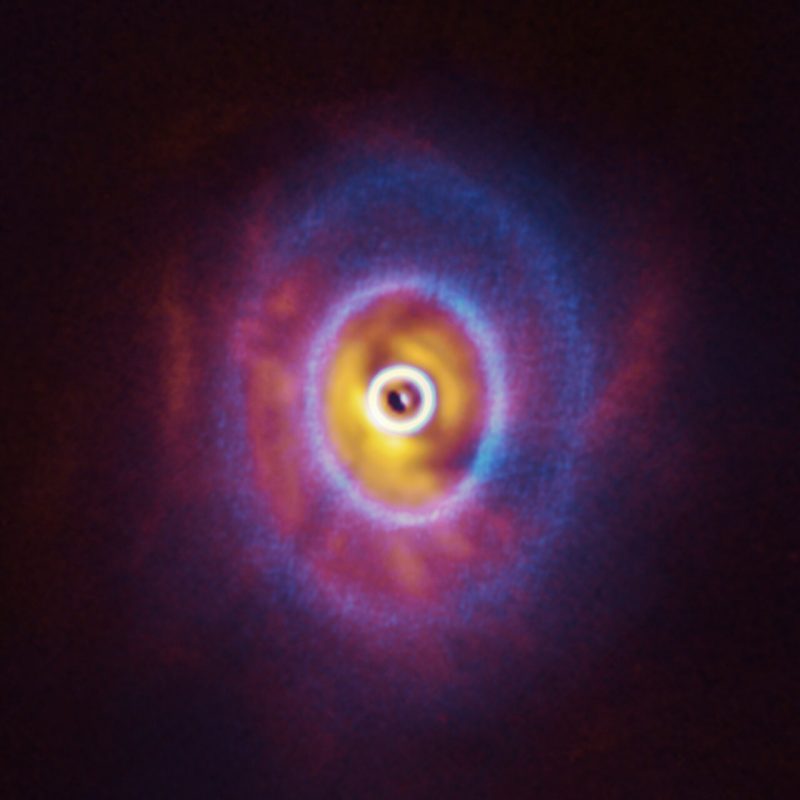
GW Orionis, or GW Ori, is a triple star system located at the head of Orion the Hunter. A massive protoplanetary disk surrounds the triple star system. This disk is a dense region of gas and dust that’s left over from the formation of these young stars and has not yet been blown away by their stellar winds. The reason scientists call it a protoplanetary disk is because the leftover material could coalesce and form planets. GW Ori’s protoplanetary disk has a prominent gap within it, and scientists announced in September that they believe a planet exists within this gap. If confirmed, it would be the first circumtriple planet known, or a planet that orbits three stars.
The scientists published their study on September 17, 2021, in the peer-reviewed journal Monthly Notices of the Royal Astronomical Society.
First circumtriple planet?
The circumtriple planet or planets, if they exist, lie about 1,300 light-years away from us.
Scientists have seen protoplanetary disks around stars before. And in 2018, they captured the first image of a planet forming in a protoplanetary disk.
GW Ori’s protoplanetary disk is different, because it surrounds not one but three stars, and has a warped, ringed structure with a big gap. The researchers used computer models to simulate the unique stellar system. They also considered the idea that the gap could be a byproduct of the torque of the three stars pulling on each other. The other option was that it could be a planet or planets massive enough to carve out the space in the ring of dust.
In the end, the simulations showed that the torque from the three stars was not enough to cause the break in the disk. The scientists then concluded that the gap is more likely due to undetected planets.
Lead author Jeremy Smallwood of the University of Nevada, Las Vegas, told the New York Times:
It may be the first evidence of a circumtriple planet carving a gap in real-time.
Planets in triple star systems
The suspected planets are not the first found in triple star systems. But planets found in those other systems orbited just one of the stars, not all three stars. As the scientists explain in their paper:
Observations show that the majority of stars form in relatively dense regions within stellar clusters, naturally leading to multi-star systems. It is estimated that more than 40% to 50% of stars are in a binary pair, while about 20% are observed in triple or higher-order systems. To date, there have been planets found in 32 triple star systems. However, as yet no planet in a circumtriple orbit has been discovered.
The gap in GW Ori’s disk lies 100 astronomical units (AU) from its central stars. Compare that to Pluto, which is about 40 AU from the sun. Or the intrepid travelers Voyager 1 and 2, which are 150 and 125 AU from the sun.
Of the three stars in the GW Ori system (called A, B and C), stars A and B are about 1 AU apart, while star C is another 8 AU farther out. The protoplanetary disk around these stars is huge. The dusty portion of the ring extends to 400 AU, while the gaseous regions reach out to 1,300 AU. The stars in this system are babies themselves, being only about 1 million years old.
The next step will be to look for a planet or planets in the disk to confirm the scientists’ computer simulations.
Animations of GW Ori
The animations below show how GW Ori got its strange protoplanetary disk and the three stars that orbit each other within.
Bottom line: Scientists believe one or more planets orbit the triple star system GW Orionis. This would be the first circumtriple planet discovered.
Source: GW Ori: circumtriple rings and planets











